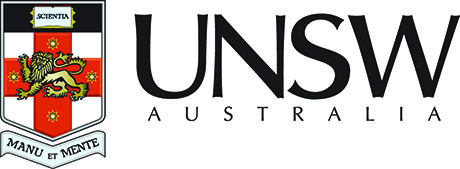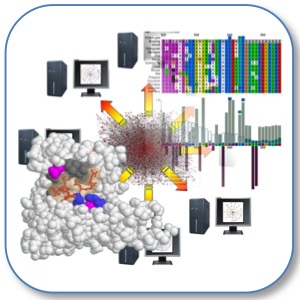

|
Edwards |
DCMF proteins with TaxaMap taxonomy assignments
Protein sequences were predicted using prokka
and the JGI Genome Portal annotation pipeline. Proteins were further annotated via high-throughput homology searching, multiple sequence alignment and molecular phylogenetics
using HAQESAC and MulitHAQ.
Putative taxonomic assignments for each protein were then made using
Each protein was subject to a BLAST+ (blastp)
search against all NCBI and JGI proteins annotated for DCMF, all bacterial proteins in the
UniProt Knowledgebase (download 2017-02-06), and the published proteomes for a set of closely related bacteria as identified from a 16S phylogeny (see paper for details). HAQESAC was used to
iteratively generate and clean up Clustal Omega multiple sequence alignments
to produce a high quality alignment against a set of close homologues. The neighbor-joining tree implementation of
Clustal W2 was used to make a phylogenetic tree (below).
(NOTE: These alignments and trees are designed to give an automated first look at a protein. Where individual
protein alignment and/or phylogenetic inference details are important, more careful analysis is recommended.)
Individual proteins can be looked at in further detail by clicking the protein ID. Paralogues and in-paralogues (products of gene duplication) can be looked at by editing the following URL with the appropriate GaXXXXX_XXXX ID: http://www.slimsuite.unsw.edu.au/research/dcmf/dcmf.php?protein=GaXXXXX_XXXX.
HAQESAC only returns the closest homologues and these paralogue lists may be incomplete as a result.
protein, JGI locus tag; ncbi, NCBI protein ID (click ^ to open entry); prokka, prokka protein ID; jgi, JGI ID; description, JGI description; inpara, DCMF-specific "in-paralogues" identified by HAQESAC; paralogues, paralogues identified by HAQESAC; genus/family/order/class/phylum, TaxaMap taxonomy predictions based on well-supported HAQESAC clades; boot, bootstrap support (0-1) for TaxaMap clade; spcode, full list of Uniprot taxonomy species codes for HAQESAC clade.
© 2019 RJ Edwards. Contact: richard.edwards@unsw.edu.au.